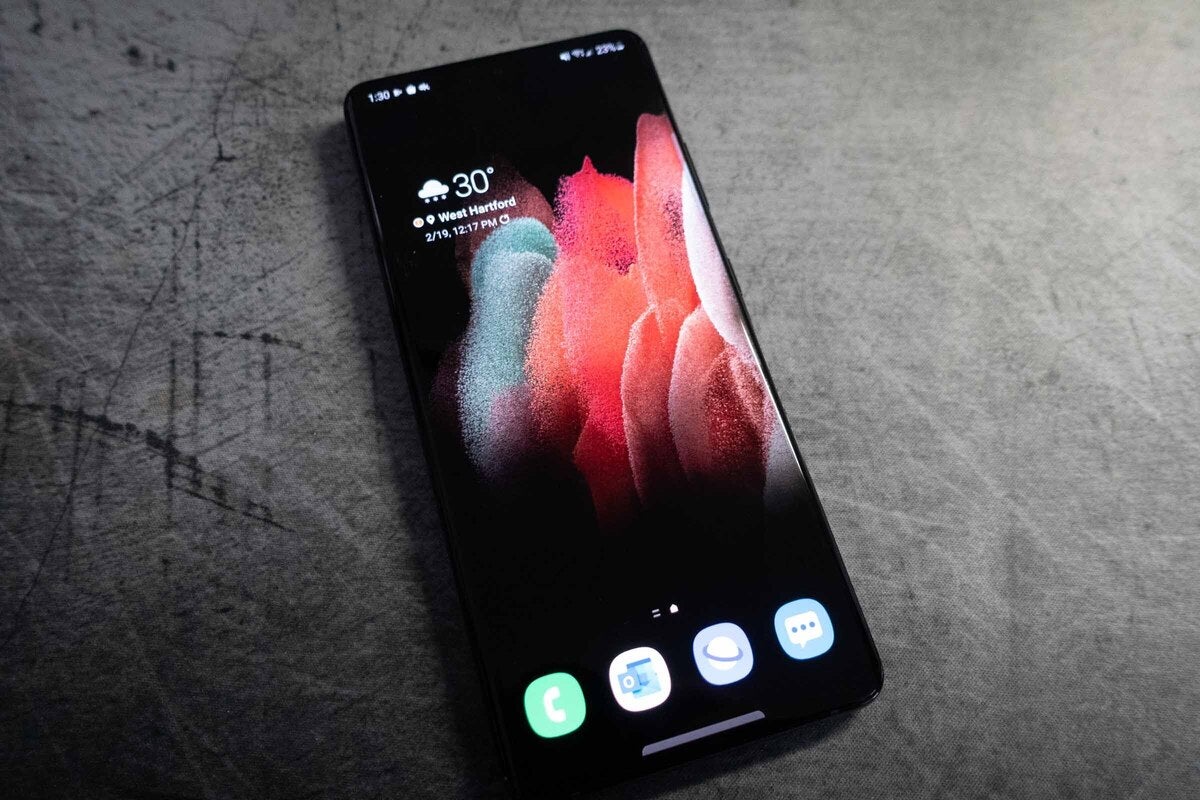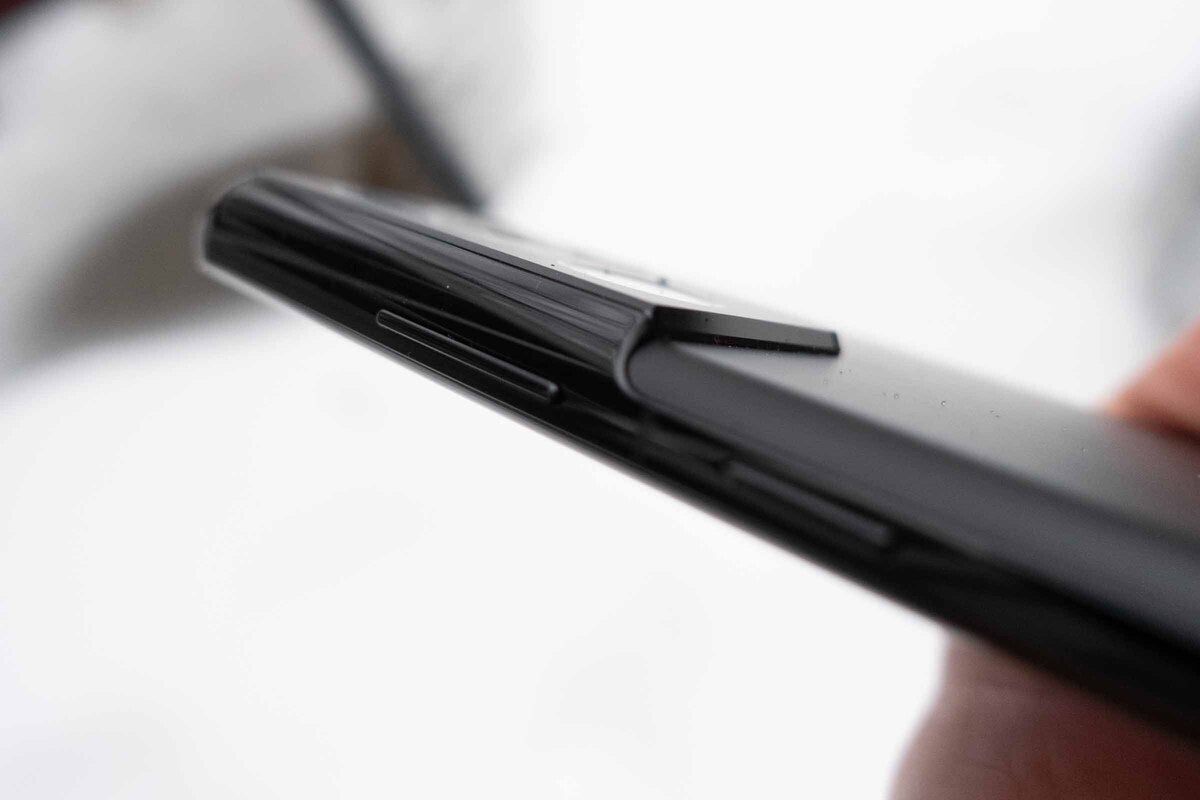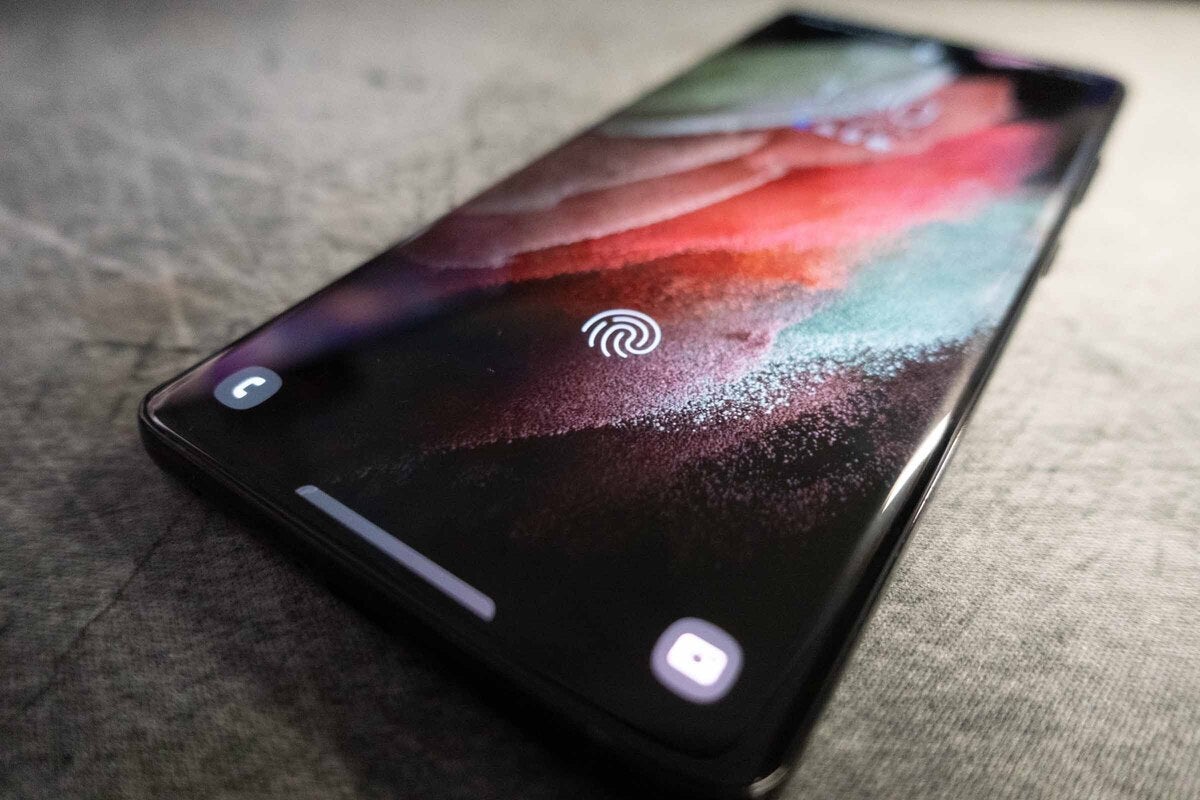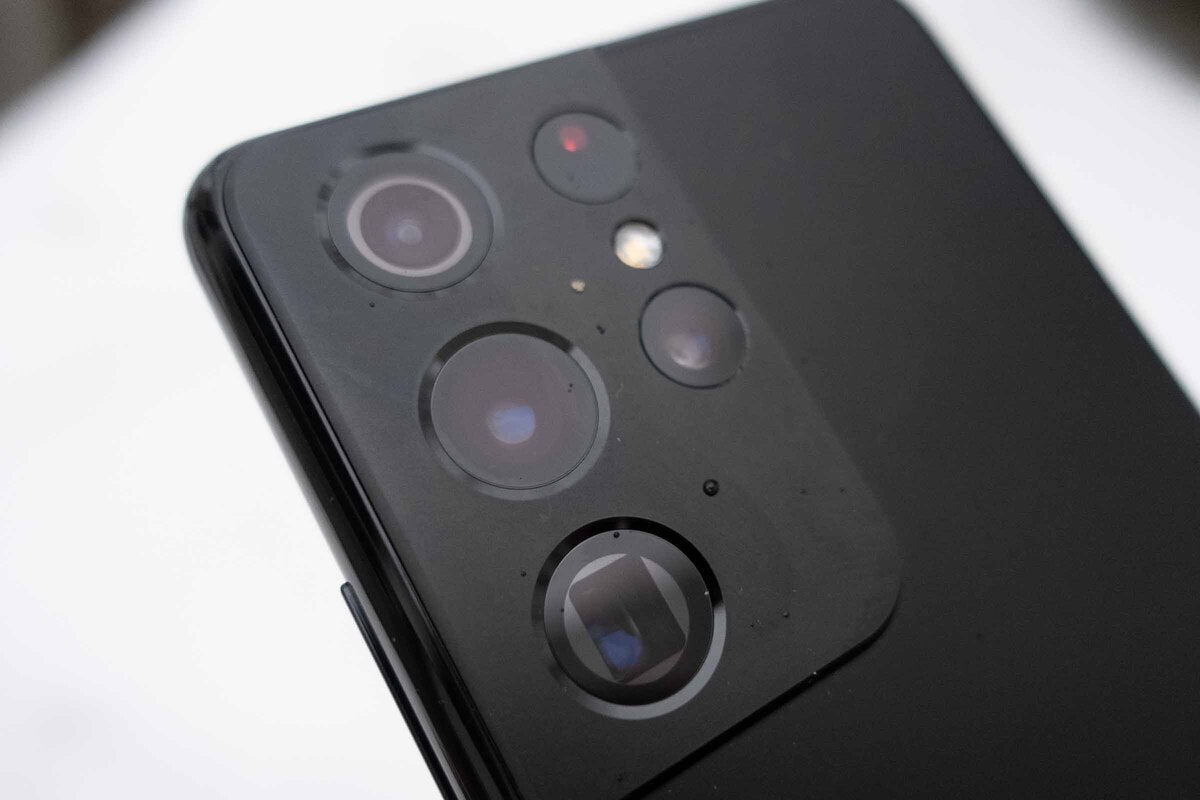[ad_1]
The Galaxy S21 Ultra is a new kind of value proposition from Samsung. It’s not just bigger than the lower-end models with a better camera, like last year’s Ultra. You’re also getting a much better screen, Wi-Fi 6E, S Pen support, and way more RAM. Whether you need those things is still up for debate, but if you want them, the S21 Ultra is well worth the upgrade from the S20 Ultra or the $200 step-up from the S21+.
 Michael Simon/IDG
Michael Simon/IDGThe Galaxy S21 Ultra has Samsung’s best display ever.
That’s mainly because the Ultra’s premium price comes at less of a premium this year. Where last year’s price tag put the S20 Ultra firmly in the upper end of the stratosphere, the S21 Ultra starts at $1,199. You can max it out with 16GB of RAM and 512GB of storage for $1,380, $20 less than both last year’s entry-level S20 Ultra and a fully loaded iPhone 12 Pro Max.
Update 3:15 PM: The Galaxy S21 Ultra is $200 off at Amazon today.
Even if it cost the same as the S20 Ultra, the S21 Ultra would still be one of the best phones ever made, maybe one worth spending upward of $1,700 on. But Samsung’s aggressive pricing makes the S21 Ultra’s spec sheet even more attractive and proves that you can have it all without actually spending it all.
Upgraded elegance
The S21 Ultra has the same design as the S21, which I reviewed last month, and it’s just as impressive. The camera array is no longer a bulbous bump floating in the top left corner, but a much more subtle one that seamlessly extends from the sides of the phone. It’s still quite big, but the new placement feels more balanced than in the previous generation’s S20, and it doesn’t bump into my fingers as often. The matte back is elegant and luscious and does an excellent job at repelling fingerprints.
The S21 Ultra is a giant phone, even it’s technically smaller than last year’s S20 (165.1 x 75.6 x 8.9mm vs 166.9 x 76 x 8.8mm). It’s basically impossible to use with one hand, and at 6.8 inches still feels very much at the upper end of how big of a phone people are willing to handle. The fact that it’s a tenth of an inch smaller than the S20 Ultra and the same size as the Note 20 Ultra seems to suggest we won’t see a 7-inch Galaxy phone anytime soon, unless it folds.
 Michael Simon/IDG
Michael Simon/IDGThe S21 Ultra’s camera array nicely blends into the sides of the phone.
Like the cheaper S21 phones, Samsung has removed a few features from the S21 Ultra, namely MST for using Samsung Pay at terminals that don’t support NFC, and the microSD card slot. The lack of expandable storage hits particularly hard, because the S21 Ultra is meant to be the highest of the high end. I assume its target audience would be inclined to use a microSD card. But alas, it’s gone.
Easiest on the eyes
If you can handle the size and static storage, however, the S21 Ultra has the best screen Samsung has ever made, which is no small feat. It debuts a number of new features for a Samsung display and sets the bar incredibly high for the rest of its 2021 competitors, including the next-generation iPhone Pro.
- It uses Samsung’s new low-powered OLED display, which reduces energy consumption up to 16 percent.
- It’s the first Samsung phone to support 120Hz at full WQHD+ resolution.
- It’s the brightest display Samsung has ever made, topping 1,500 nits.
- It’s Samsung’s most efficient adaptive refresh display, with a range of 10Hz to 120Hz.
 Michael Simon/IDG
Michael Simon/IDGThe Galaxy S21 Ultra has a giant screen—but it’s a bit smaller than last year’s S20 Ultra.
So it’s not a stretch to say the Galaxy S21 Ultra has the best display ever made. Of course, that was also true of the S20 Ultra at the time, but the S21 Ultra feels like a true achievement in display technology. The size will be an issue for many users, but Samsung has nevertheless delivered a ridiculously good display.
Performance you expect
Along with the best display you’re ever seen, you’re also getting the best set of specs ever assembled in an Android phone:
- Processor: Snapdragon 888
- RAM: 12GB/16GB LPDDR5
- Storage: UFS 3.1 128GB/256GB/512GB
- Battery: 5,000mAh
- Wireless: sub6 + mmWave 5G, Wi-Fi 6E
- Ultrawide band: Yes
That’s not quite across-the-board better than the S21 and S21+, but it’s a marked improvement. You’re getting slightly faster speeds thanks to the extra RAM, but the S21 is already crazy-fast, so it’s not something you’ll notice in day-to-day use. If you want numbers, I’ve got numbers:
Galaxy S21
Geekbench 5 (Single/Multi)
S21: 1076/3223
S21 Ultra: 1118/3541
PCMark Work 2.0
S21: 13070
S21 Ultra: 13525
3D Mark Wildlife
S21: 5209
S21 Ultra: 5686
The marquee feature is the UWB chip, which operates in a dedicated section of the radio spectrum to enable precise location tracking. That’ll come in handy when Samsung starts selling its SmartTag+ UWB-powered tracker later this year.
 Michael Simon/IDG
Michael Simon/IDGThe S21 Ultra’s camera array is a sight to behold.
The S21 Ultra’s 5,000mAh battery is a powerhouse as well, with absolutely no trouble making it through a day of heavy use. Benchmarks delivered nearly 11 hours, way longer than the S20 Ultra and basically any other Android phone I’ve ever used. Even with the 120Hz display turned on, I had no problem getting through a day and then some. It’s in iPhone 12 territory—you won’t have to worry about the battery unless you’re downloading giant files over 5G for hours on end.
Also new is the addition of the S Pen, which is an extra accessory—and it doesn’t have a slot like the Note. I’m not sure how big the market for it is, but if you’ve ever lamented about the inability to write on your S phone, this will scratch that itch. It can’t do any of the fancy Bluetooth air gestures yet—you’ll need the S Pen Pro for that, which is launching later this year—but the amateur S Pen works perfectly well for taps and notes.
Up close even from far away
While the Ultra surname can apply to all aspects of the phone, nowhere is it more obvious than with the camera. Not only is the S21 Ultra’s camera a massive improvement over the S21 and S21+, but it’s also a big leap over last year’s already-capable rig:
S20 Ultra
Camera 1: 12MP Ultra Wide, f/2.2
Camera 2: 108MP Wide-angle, f/1.8
Camera 3: 48MP Telephoto (5X), f/3.5
Camera 4: DepthVision (time-of-flight)
S21 Ultra
Camera 1: 12MP Ultra Wide, f/2.2
Camera 2: 108MP Wide, f/1.8
Camera 3: Telephoto (3X) 10MP, f/2.4
Camera 4: Telephoto (10X) 10MP, f/4.9
The biggest improvements over the S20 Ultra are with the telephoto lens and autofocus. The laser autofocus introduced with the Note 20 is here so the S20’s focusing issues are gone, which makes it much easier to quickly point and shoot. Samsung improved the S20 after a couple of updates, but it never felt as fast as it should. The S21 does.
 Michael Simon/IDG
Michael Simon/IDGThe zooming capabilities on the S21 Ultra are simply amazing. Compared to the original at top left, we see near-perfect clarity at 10X (top right), very decent quality at 30X (bottom left), and useable shots at 100X (bottom right).
Equally noticeable are the improvements Samsung has made to zooming. Samsung made telephoto photography a big deal with the S20, and it continues here with the addition of a second telephoto lens. That enables very clear photos at 10X zoom, twice as long as the iPhone 12 can shoot with digital zoom. Comparing the results to any other phone isn’t even fair. If telephoto photography is your thing, there’s no reason to consider any other phone.
Samsung still lets you “Space Zoom” up to 100X, and while it’s a little more stable and less noisy than the S20, it’s still more of a party trick than a serious feature. It’s quite amazing that a phone can zoom all the way to 100X and still retain some semblance of image quality, but you won’t be using it very often, if ever.
 Michael Simon/IDG
Michael Simon/IDGThe S21 Ultra (left) handles my son’s hairline against a tricky background noticeably better than the S21 (center) and iPhone 12 (right). It’s the only one of the three to retain small details and not lose the top against the busy back wall.
Where the extra telephoto lens truly shines is with portraits. Of course, Samsung phones have had a portrait mode since Selective Focus arrived on the Galaxy S5, but it’s never been better than on the S21 Ultra, with extremely crisp edges, clean lines against any background, and a pleasant background blur.
Elsewhere, the S21 Ultra takes excellent photos that are on a par with the best in the field. My biggest criticism is that photos tend to be a bit overexposed. No matter which of the four cameras you opt to use, however, you’ll be snapping a very good pic. Going forward, Samsung needs to turn its attention to a deeper level of processing, but it’s hard to find too much fault with a telephoto camera that’s this remarkable.
Should you buy the Galaxy S21 Ultra?
For most buyers, the Galaxy S21 Ultra will be too much phone for too much money. Like the iPhone 12 Pro Max, it’s very big and heavy, and it will set you back a bundle of dough. If you’re the least bit cautious about what your spend, this isn’t the phone for you, and the $800 S21 is the way to go.
But if you have a bigger budget, the S21 Ultra represents the best—the best of Samsung, the most powerful telephoto camera, and the best of everything Android has to offer at any price. It’s also $200 cheaper than the S20 Ultra, and the corners Samsung cut to get there didn’t sacrifice too much of what makes it an ultra-premium phone. While the microSD slot and MST might seem like meaningful losses, the things you’re gaining more than make up for it.
[ad_2]
Source link